Nesting Cycle
More than 700 bird species breed in North America, and the variations in their behaviors are fascinating and complex. Different species find mates, build nests, lay eggs, and raise their young in incredibly different ways. This overview is a generalization of the avian nesting cycle. For more information about the nesting cycles of individual birds, visit our guide to common nesting birds.
Finding a place to breed
Throughout the year, most birds use day length to tell what season it is. When the number of hours of daylight exceeds a certain critical level, physiological changes are triggered in birds which prepare them to breed. Most birds, especially those in temperate regions, also time their breeding activities so that they will be feeding their nestlings when food is most abundant. However, well before nestlings arrive, birds need to select a breeding territory. Non-migratory species may either maintain a territory throughout the winter or establish a new one in the spring. Migratory birds begin looking for and defending a territory as soon as they arrive in the spring. Good territories provide potential nest sites, reliable food sources, and protection from predators.
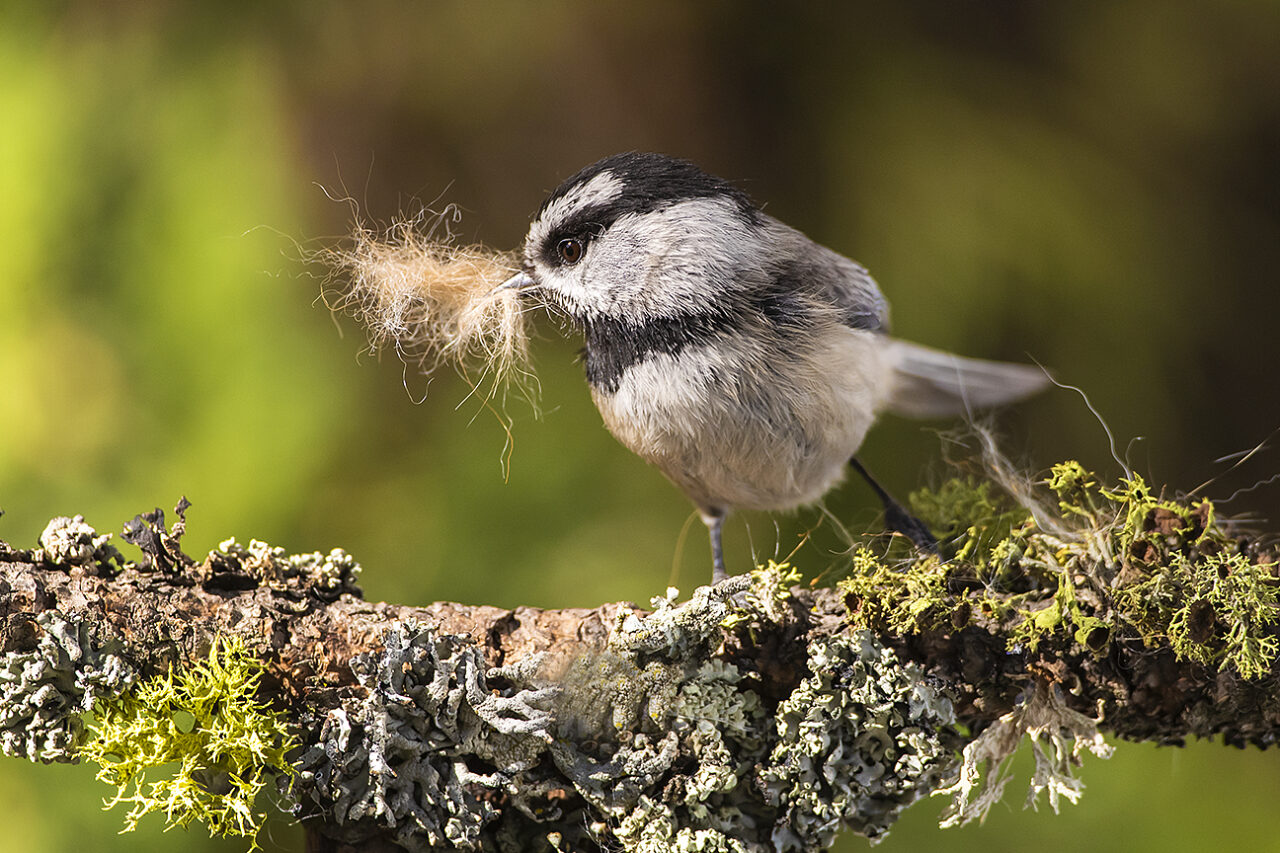
Mountain Chickadee with Nesting Material
Choosing a mate
While territories are being claimed, birds try to attract mates. In most species, females choose males based on an assessment of their overall quality and vigor. Males advertise their suitability as a mate by exhibiting bright breeding plumage during courtship displays, by bringing food to females, by demonstrating their nest-building abilities, and by singing, drumming, or calling. Social pair bonds tie males and females of most species together throughout the breeding season, but promiscuity is not uncommon. DNA analyses has shown that even birds that presumably “mate for life,” such as bluebirds, may not always be faithful. It is possible for nestlings in a single nest to be fathered by different males! Males of some species, such as Red-winged Blackbird and House Wren, can have more than one mate at a time (a mating system called polygyny). Much less commonly, females of some species, such as Wilson’s Phalaropes, may have more than one mate as well (polyandry).
Nest building
Nests provide a safe place for eggs and young birds to develop. Bird nests are extremely diverse, although each species typically has a characteristic nest style. Some birds do not make nests at all and instead lay their eggs in a simple scrape in the ground. Other birds construct nests from natural materials, such as grass, leaves, mud, lichen, and fur, or from human-made materials like paper, plastic, and yarn. Nests can be found almost anywhere – on the ground, in trees, in burrows, on the sides of cliffs, in and on human-made structures, etc. Females typically build nests, but sometimes both parents or just the male will build it.
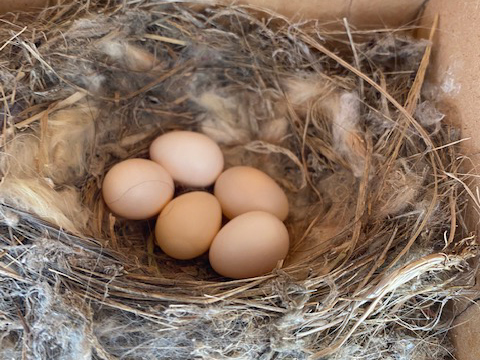
Say's Phoebe Nest with Eggs
Copulation and egg formation
During the breeding season, hormonal changes cause the internal testes of males to swell to more than 1,000 times their normal size. The ovaries and oviduct of females also increase in size in preparation for egg fertilization and development. During copulation, the male’s cloaca contacts and ejects sperm into the cloaca of the female. The sperm travel to the oviduct where they can be stored for long periods. If all goes well, the sperm penetrate through the wall of the ovum (egg) and fertilization takes place. During the first stage of embryonic development, the egg shell develops; pigments are added last. Ovulation and laying take about 24 hours, so female birds typically produce at most one egg per day.
Egg laying
The total number of eggs that a female can lay in one nesting attempt varies widely depending on the species. For example, many tropical birds lay clutches of only 2 or 3 eggs. Waterfowl, such as Wood Ducks, can lay up to 15 eggs in one nesting attempt. Clutch size can also vary widely among individuals of the same species depending on food and calcium availability, latitude, age of the female, weather, and time of year. The size, shape, color, and texture of bird eggs are also extremely variable both within and among species.
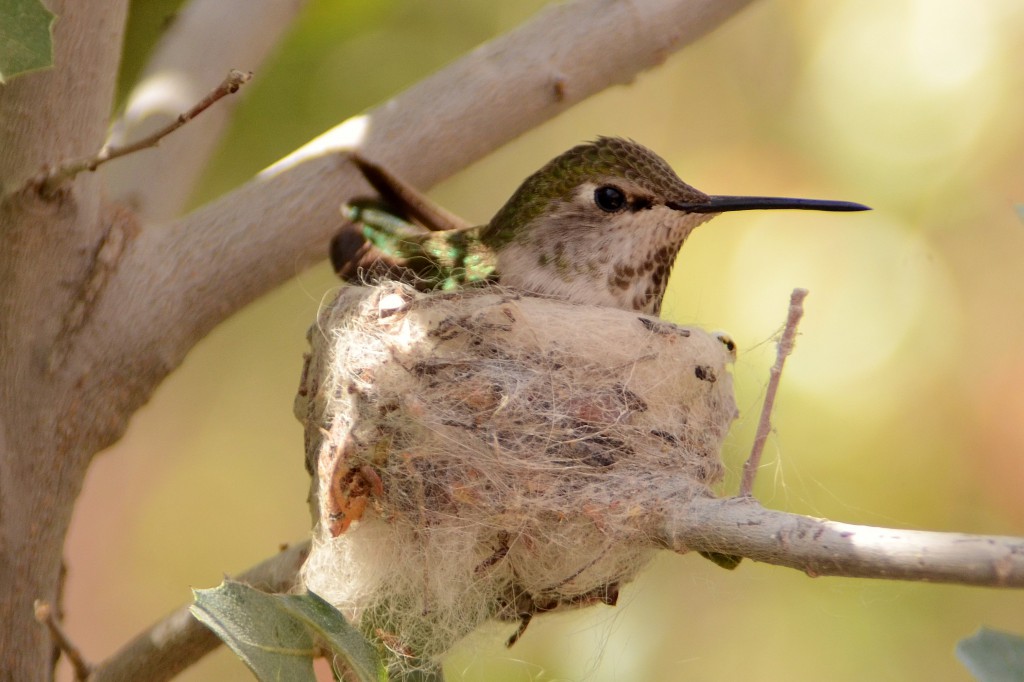
Anna's Hummingbird on Nest
Incubation
Birds incubate their eggs to keep them at the proper temperature to ensure normal development. Female songbirds usually begin incubation after they have finished laying all of their eggs so that they will hatch at approximately the same time. Other birds, such as herons, cranes, cormorants, and raptors begin incubation as soon as the first egg is laid and therefore their eggs may hatch on different days. In some species, like Black-headed Grosbeak, both males and females incubate eggs. Incubation time varies depending on the species, but typically the larger the bird, the longer the incubation period.
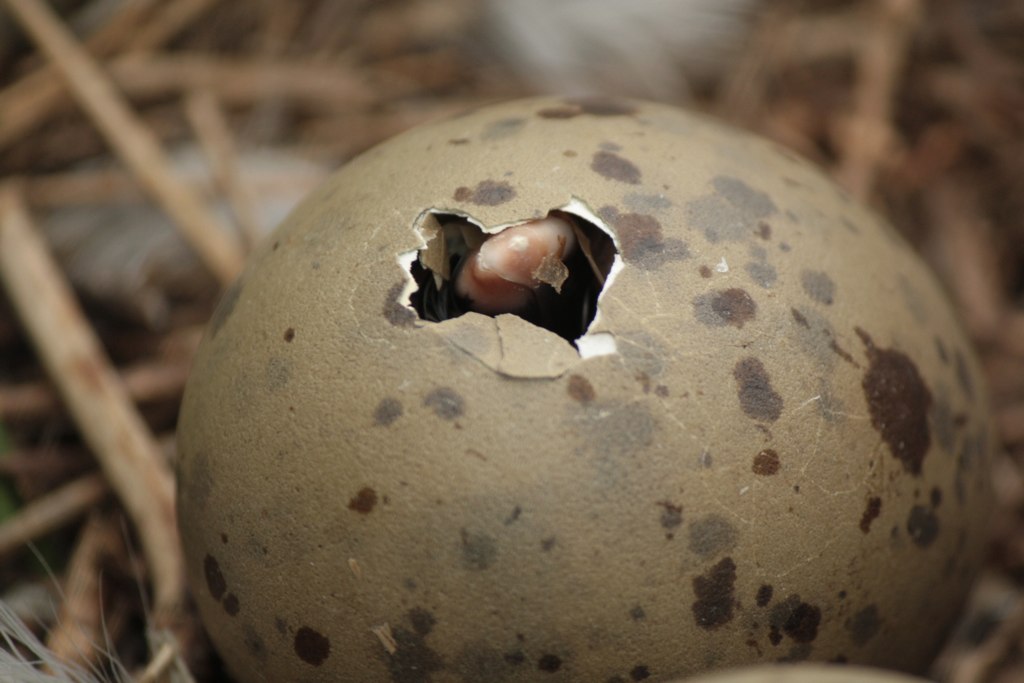
Hello, World
Hatching
Songbirds and most seabirds have altricial young, meaning that the newly hatched birds are blind, featherless, and helpless. Immediately after hatching, altricial birds can do little more than open their mouths to beg for food. They remain in the nest where the parents can feed and protect them while they continue to develop. For the first week of life, most altricial birds cannot control their own body temperature and must be constantly brooded (kept warm) by their parents. By the end of the first week, their eyes are usually open and their feathers are beginning to emerge. During this period, nestlings can experience remarkable growth by doubling their body weight several times! Precocial species, such as ducks and many shorebirds, are born fully feathered, mobile, and with eyes open. Incubation periods are longer for precocial birds than altricial birds, allowing for increased embryonic development in the egg, and therefore they have relatively advanced motor and sensory functions at hatching.
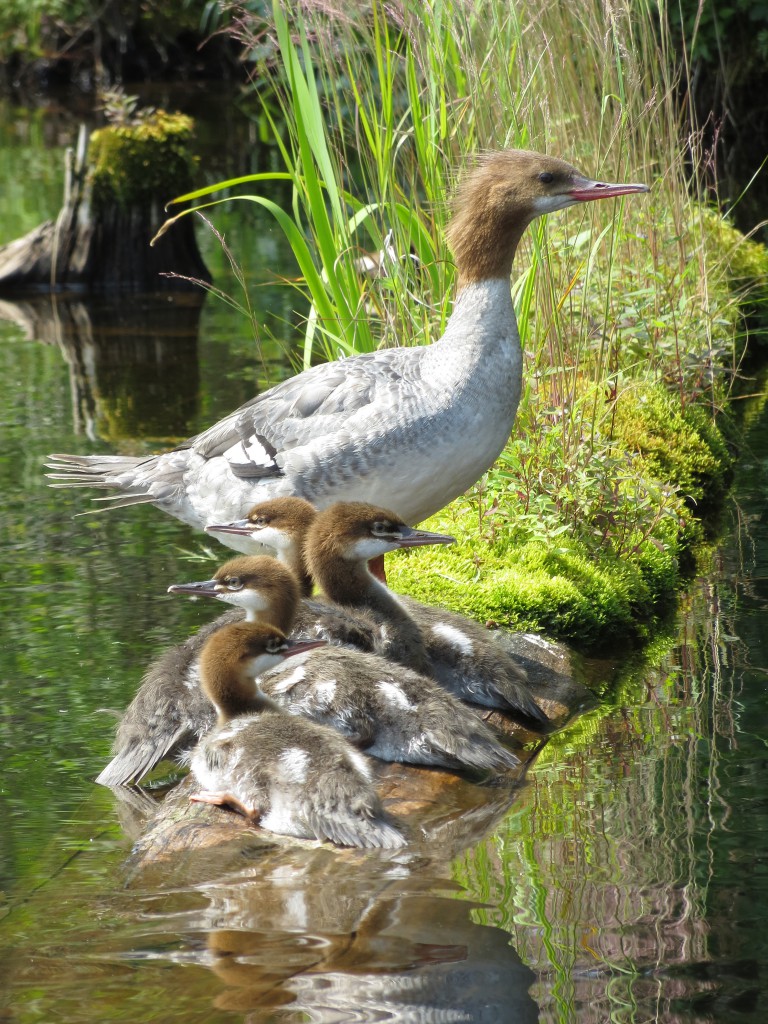
Common Mergansers
Feeding the young
To keep up with the food demands of nestlings, their parents continuously forage for food. This is an extremely dangerous time for both the adult and young birds because the increased activity and begging cries of nestlings can attract predators. After 2 or 3 weeks, most songbirds are usually ready to leave the nest. Other birds, such as raptors, may stay in the nest for as long as 8 to 10 weeks. In contrast, precocial birds spend hardly any time in the nest and are often seen wandering in search of food alongside their parents only hours after hatching.
Leaving the nest
Most birds nest only once per year, but some species, like the American Robin, can have up to 4 or 5 nests during a single breeding season. After leaving the nest (fledging) young birds typically remain close to their parents for a short period. During this time, young birds must learn to survive on their own and are very vulnerable to predators and starvation. The first year is the toughest; in nearly all bird species, more than half of the first year birds perish. For birds that do make it to adulthood however, the odds of surviving another year improve greatly.
